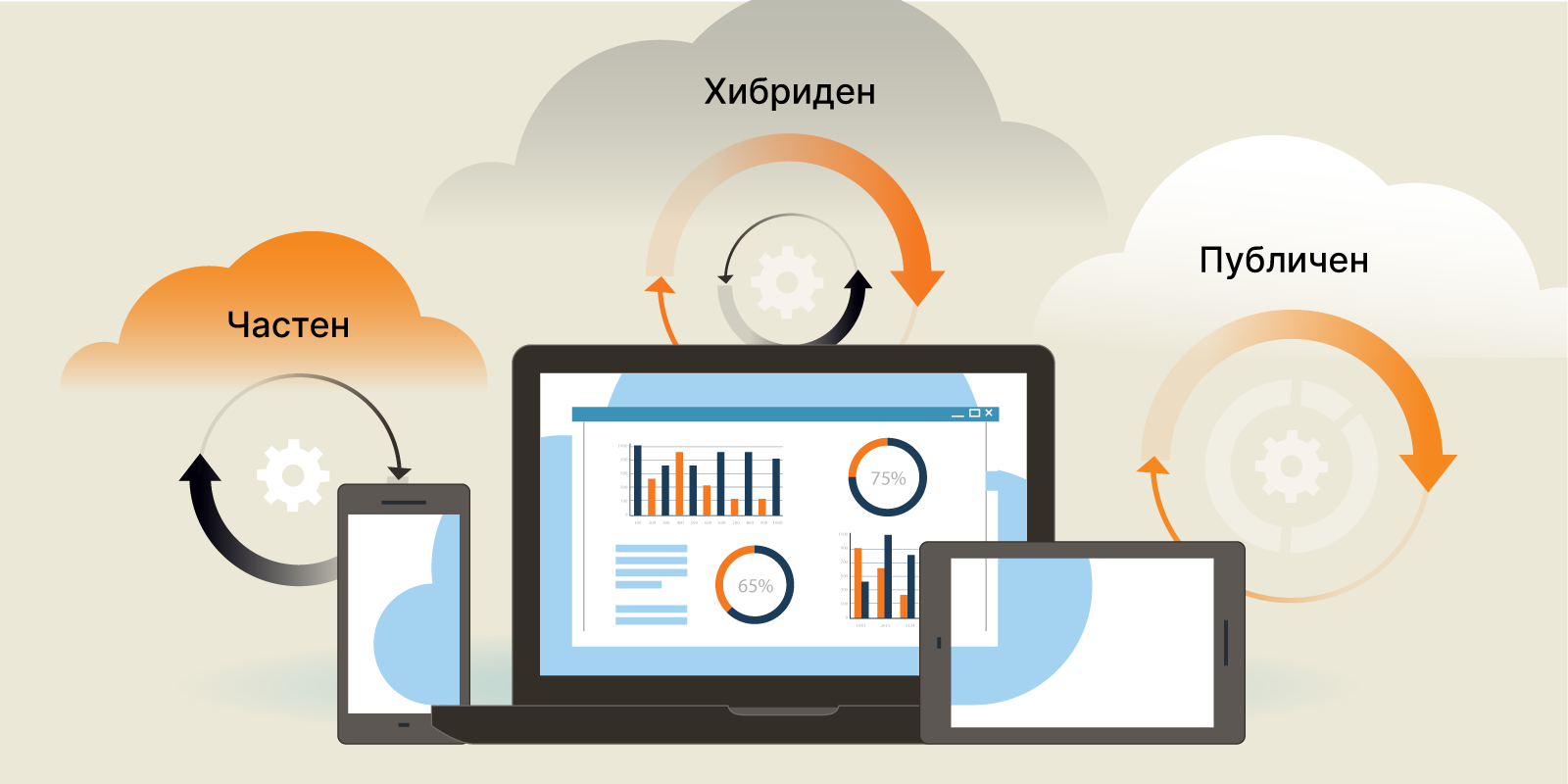Contact information.
-
Address"Ekzarh Yosif" street, 31, 1000 Sofia, Bulgaria
-
Phone:+359 2 980 95 99
-
Websitewww.balkanservices.com

In part one of this series on cloud technologies, we looked at their nature, purpose, and benefits.
With the massive adoption of cloud technologies, we are no longer talking about just cloud, but public, private, and hybrid cloud.
It is worth underlining that public, private, and hybrid clouds largely cover the basic definition of cloud computing, but they also have differences. What these are, we will look at in the article.
Read more: What is cloud technology – characteristics, purpose, benefits
The public cloud is a cloud infrastructure that allows companies to take advantage of the full capabilities and potential of remote computing power.
The term encompasses data centers and platform and software service providers, and the services are provided for a fee and used by a wide range of users.
Examples of organizations providing public cloud services are tech giants Amazon, Microsoft, and Google.
Private cloud comes under the definition of providing centralized remote computing power to users' end devices via the Internet.
The infrastructure is intended for the organization’s use and is not shared with other companies or users.
The servers are not located in a data center and the entire responsibility for maintaining the infrastructure lies with the specific organization. Many modern business software rely on private cloud technologies.
Our team is here to listen carefully and offer the right solution for you.

Read more: Types of cloud services – IaaS, PaaS, SaaS
Many companies choose to use processes and services that are leased from a vendor, as well as those that are supported entirely in-house. In these cases, we can talk about a hybrid cloud.
For example, the main part of the software can be on a server in the organization (on-premises) and the databases can be used as PaaS (Platform as a Service).
The hybrid cloud approach is proving to be particularly effective and is often used by financial institutions. They prefer the core banking system to be installed on their own servers (on-premises), and for electronic payments, for greater speed and availability, they choose cloud-based solutions.
For a number of organizations, the pandemic has significantly accelerated their digital transformation plans. The use of cloud-based ERP systems, Business Intelligence solutions, and other business software will continue to grow, helping organizations adapt to the already established hybrid operating model.
Gartner forecasts global spending on cloud technologies will reach over $482 billion in 2022, up from $313 billion in 2020*.
We’d love for you to share the article with your colleagues if you found it useful.
At Balkan Services, we have expert knowledge of business, technology, and legislation, and are fluent in all three languages. We will listen carefully and advise you on choosing the right business system for your needs.
Balkan Services has been implementing business software since 2006 and has completed more than 660 projects for over 320 companies. We follow a proven implementation methodology with clear steps and know-how on best practices.